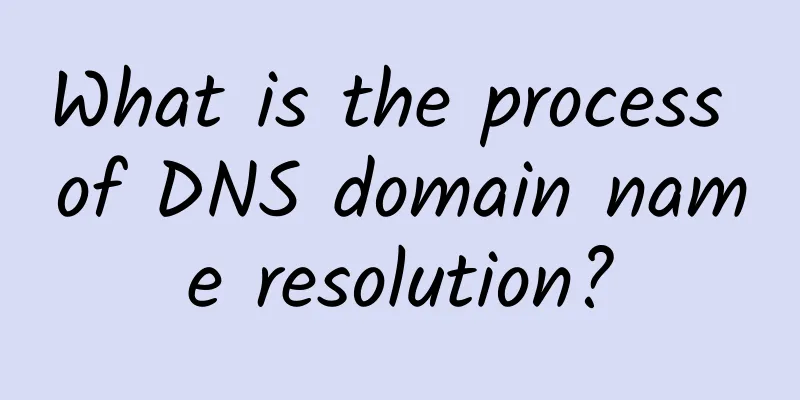What is the process of DNS domain name resolution?

|
Interviewer: Please tell me what the process of DNS domain name resolution is like? The DNS protocol is an application layer protocol based on UDP. It is used to convert the website's URL, that is, the domain name, into an IP address so that users can access the website. picture DNS links domain names and IP addresses together. With a DNS server that stores the correspondence between website domain names and IP addresses, we don't have to enter the IP address to visit a website. Instead, we enter the URL and then access the website by requesting the DNS server to obtain the IP corresponding to the domain name. picture The namespace of a DNS domain is a tree-like hierarchical structure, which can generally be divided into a root domain, a first-level domain (also called a top-level domain), a second-level domain, a subdomain, and a host name. picture Correspondingly, there will be a domain name server at each layer of the domain name to provide domain name resolution services at the corresponding level. picture The process of DNS domain name resolution is that the host first checks the DNS cache on the local browser, then checks the DNS cache and hosts file in the local operating system. If there is no DNS domain name resolution, it will initiate a DNS domain name resolution request to the local DNS server. If the local DNS server has the IP address corresponding to the requested domain name, it will directly return to tell the host. If not, it will send a request to the root domain name server. The root domain name server is the highest level and is not directly used for domain name resolution, but it will tell the local DNS server to find the corresponding top-level domain name server. Then, the local DNS server will find the corresponding top-level domain name server for request. The top-level domain name server will tell the local DNS server to find the corresponding authoritative DNS server. The local DNS will then turn to ask the authoritative DNS server. After the authoritative DNS server queries, it will tell the local DNS the corresponding IP address, and the local DNS will return the IP address to the host. At this time, in order to avoid the above resolution process again when the DNS resolution is initiated for this domain name next time, the host and the local DNS will cache the domain name resolution result just now. The next time the resolution is performed, if there is a cache, the resolution result can be directly obtained from the cache. picture picture picture picture picture From the above process, we can see that there are two types of DNS query methods, one is recursive and the other is iterative. Recursive query means that if A requests B, then B, as the recipient of the request, must give A the answer he wants. picture Iterative query means that if receiver B does not have the exact content required by requester A, receiver B will tell requester A how to obtain the content, but will not make a request itself. picture In actual applications, recursive queries are usually used for queries from the requesting host to the local DNS server, while iterative queries are used for the local DNS server to send query requests to the root domain name server or top-level domain name server. picture
|
<<: What are the differences between HTTP and HTTPS besides security?
>>: Quick introduction to IM communication technology: short polling, long polling, SSE, WebSocket
Recommend
I finally figured out the service flow limit issue.
Introduction With the development of microservice...
How 5G will reshape future smart home life
Home is where the heart is. The old adage conveys...
"Prevention" is the key! The three major operators have taken multiple measures to help resume production and work
With the end of the extended Spring Festival holi...
You can experience high-speed 5G network without 5G package, the three major operators confirmed, netizens are happy
Is this the norm for most people now? They hold 5...
Huawei grandly releases the Intelligent Micro Module 5.0 solution
[51CTO.com original article] On September 17, 202...
Chip shortages, edge computing and IoT will drive IT transformation in 2022
Forrester Research pointed out in its research th...
Apple's in-house modem solution is a huge challenge, but the rewards are huge if it succeeds
Apple's move to develop its own wireless comm...
Three major problems facing my country's 5G base stations
At present, the development of 5G commercializati...
The 10 coolest software-defined networking technologies of 2017
Software is driving the innovation engine of the ...
DPtech and Zhejiang Provincial People's Hospital jointly established a network security operation and maintenance demonstration center
Recently, the network security operation and main...
What should you do if you forget the wireless router backend login address?
If you want to modify the configuration of the wi...
Let’s talk about the stories behind Cookie, Session and Token
Hello everyone, I am Director Dabai(●—●). Today I...
The overlooked hardware vulnerabilities in enterprise networks
Typically, hackers will gravitate to the weakest ...
What is the difference between a cell and a sector? What about carrier frequency and carrier wave?
Cell, sector, carrier and carrier frequency are a...
The seven-layer network model and TCP, UDP, what happens in an HTTP request
[[267883]] 1. Seven-layer network model The http ...









